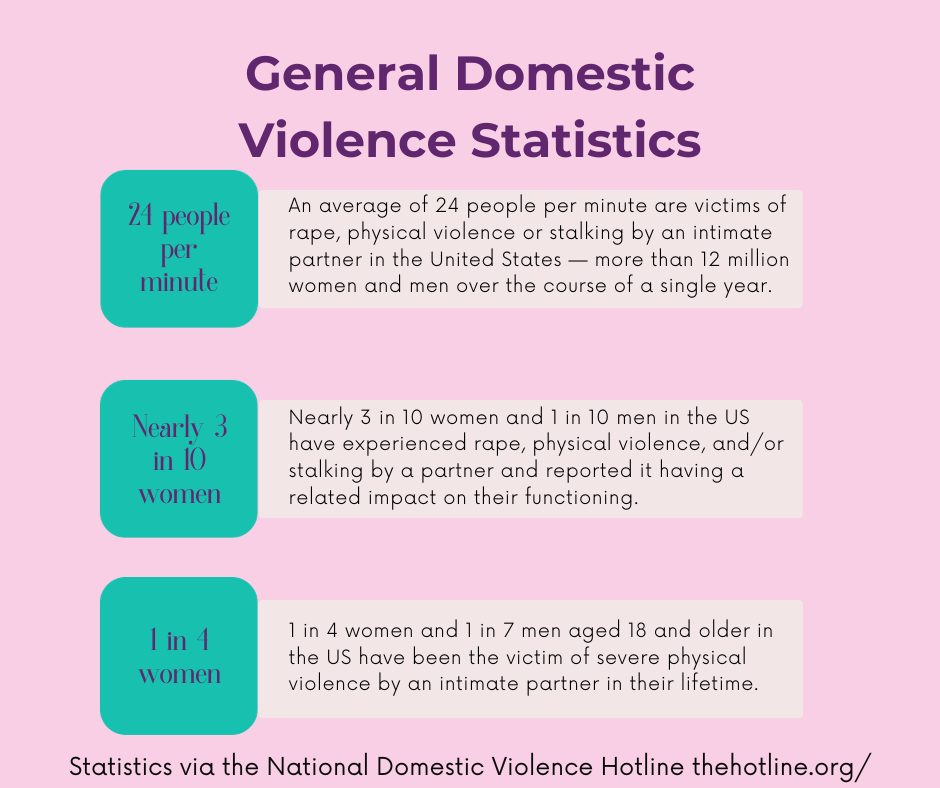By Ava Lee-Green
Around 24 people in the U.S. are victims of domestic violence every minute. Over the course of a year, this adds up to approximately 12 million people. Domestic Violence Awareness Month has evolved in the past few decades of its annual observation, but the intent has remained the same: to raise awareness about this issue and to unite the millions of people across the country who are survivors of domestic violence.
What is Domestic Violence?

Domestic violence is often defined as violence or aggression towards an intimate or romantic partner. However, the reality of domestic violence transcends beyond this narrow definition. While domestic violence does include sexual assault and physical violence, it also can be non-physical like emotional abuse or withholding funds to isolate a partner. Child abuse is also sometimes considered domestic violence, despite not being between intimate or romantic partners.
Although the severity of the violence can vary, the desire of one partner to control the other remains consistent. And, while women on average experience a higher rate of domestic violence, it affects members of every community, regardless of race, religion, ethnicity, sex, gender, etc.
For the Survivors
Know that many people have similar experiences. Various local and national programs support domestic violence survivors with not only short-term legal aid but also with finding new housing, job hunting to become self-sufficient, and many other long-term tasks. These initiatives also often provide spaces for victims to form communities and speak about shared experiences.
Acknowledging domestic violence is the first of many steps to safety, but is often the most difficult to do. Safety plans (unless it is an emergency, in which case call 911) can also be helpful, especially in organizing essential documents and support after leaving the situation. Take precautions when reaching out to organizations, such as utilizing the “safe exit” button. And, always know that there are thousands of advocates prepared to support domestic violence victims around the country.
For the Supporters

Recognize the indicators of potential domestic violence. This not only includes indications of physical violence but also psychological and emotional abuse, such as isolating someone from friends and family (often happens over some time), consistently making demeaning comments about their partner, and controlling all household finances without providing money for personal expenses.
It is also important to understand that the survivors must be the ones to remove themselves from the situation. If not, they may return to the abusive relationship. But, that doesn’t mean friends and family can’t do anything to support them while leaving the violent situation. Supporters can offer to go with them to legal or social services, set up a support system, and not judge them about their decisions. Ultimately, however, the support system must follow the survivor’s lead – overbearing ‘help’ can be unproductive.
Resources
Click here to access the National Domestic Violence Hotline website. Call +1 (800) 799-7233 or text “START” to 88788 to receive anonymous help.
Some of the ERA Coalition partners offering direct services in support of victims and survivors of domestic violence:
- Arkansas Coalition Against Domestic Violence https://www.domesticpeace.com/
- Coalition to Stop Violence Against Native Women https://www.csvanw.org/
- Connecticut Coalition Against Domestic Violence https://www.ctcadv.org/
- Georgia Coalition Against Domestic Violence https://gcadv.org/
- Indiana Coalition Against Domestic Violence https://icadvinc.org/
- Maryland Network Against Domestic Violence https://www.mnadv.org/
- North Carolina Coalition Against Domestic Violence https://nccadv.org/
- Peace Over Violence (Based in Los Angeles) https://www.peaceoverviolence.org/one-on-one
- RI Coalition Against Domestic Violence https://ricadv.org/
- Vermont Network Against Domestic and Sexual Violence https://www.vtnetwork.org/get-help/
- Virginia Sexual and Domestic Violence Alliance https://vsdvalliance.org/

